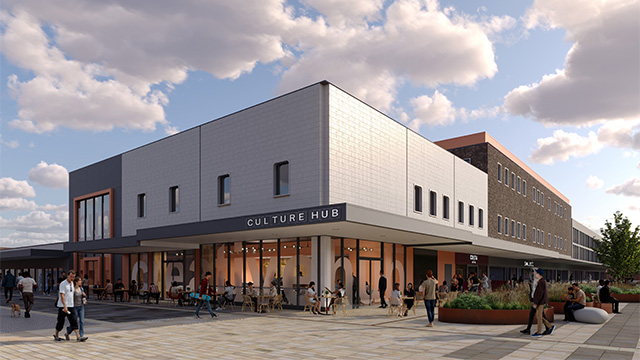 With the UK’s food and beverage market growing by 3.1% to £34.5bn in 2015 according to market analyst Mintel, where is the funding coming from for new and expanding ventures? Private investors? Institutional investors? Are banks still interested? And how much are new initiatives such as crowdfunding coming into play? Noella Pio Kivlehan asked the industry to share its views
With the UK’s food and beverage market growing by 3.1% to £34.5bn in 2015 according to market analyst Mintel, where is the funding coming from for new and expanding ventures? Private investors? Institutional investors? Are banks still interested? And how much are new initiatives such as crowdfunding coming into play? Noella Pio Kivlehan asked the industry to share its views
Chris Stott, partner and head of KPMG UK’s food and drink team
Investment in the food and beverage sector is coming from four main sources.
First, there’s a huge amount of private equity interest in the sector, with medium-to-large-sized investors leading the way. There are also plenty of niche growth opportunities for them to invest in, particularly around health, indulgence and convenience propositions.
Second, bank support for the industry continues. Many banks have substantial asset security and strong cash generation. Third, investment is coming from overseas, specifically from private equity houses such as Nomad and corporates such as Bright Foods and Mizkan. These overseas investors are seeking strong brands and food and beverage know-how.
Lastly, there is some government support through EU funding and local level innovation and growth funds.
Mark Sheehan, managing director, Coffer Corporate Leisure
Investment into new F&B concepts and businesses often comes from crowdfunding (see London Union profile, Pxx) or private equity. There are fewer barriers to entry into the market due to the popularity of F&B taking A1 sites and smaller units where the overheads are often more palatable. Property investment in F&B is often from:
- Institutions who like the long leases from leisure property (often 25 years), indexed growth throughout the term by fixed rental uplifts, hedging against inflation.
- Private foreign investors and HNWIs who like the fact they can spend time visiting the assets and get to know them. They also like the longevity of F&B properties such as old pubs.
- Savvy UK investors who have a strong understanding of the growth of the leisure market and rents.
For all investors, comprehensive knowledge of the F&B occupational market is vital. Knowing which areas and sub-markets are going to see rental growth – even down to which end of a particular street – will be essential for unlocking future capital value. For instance, in London, sub-markets like Fitzrovia and around the Covent Garden fringe such as Kingsway, WC2, are yet to realise their investment potential and will contain many opportunities.
Kristian Rogers, partner at law firm Gowling WLG
The entrepreneurial hospitality sector is starting to adopt alternative models such as crowdfunding and peer-to-peer lending. Given the recent successes of companies like Street Feast, Chilango and Brewdog, we’re likely to see more examples in the next 12 months of people using these alternatives instead of the more traditional sources of debt and equity finance.
Julia Wilkinson, portfolio & group restaurant strategy executive, and Charles Owen, portfolio executive, Shaftesbury
We don’t directly fund a new venture, but we always encourage new up-and-coming operators, and our smaller units, such as those in Neal’s Yard, offer such operators the opportunity to take a shorter lease on units, which doesn’t require significant fit-out capital expenditure.
Kingly Court off Carnaby Street, W1, is another example of affordable, flexible restaurant units that we have created with start-up and independent restaurant concepts in mind.
We also seek out short- and medium- term pop-up opportunities across the portfolio where we can. Meatball shop The Bowler is another example of a medium-term pop-up at Seven Dials, creating the opportunity for this market operator to trial their first bricks-and-mortar site.
Neal’s Yard at Seven Dials is one of our successful incubator spaces for new operators that fit with the special nature of the yard. Pizza operator Homeslice, and more recently wholegrain-based company 26 Grains are prime examples of how Seven Dials finds new brands and nurtures them to build in the capital. We are keen to introduce new concepts and something unique for the area.
In our experience, start-ups and small operators tend to be funded by alternative sources of finance, often from multiple sources. We see new up-and-coming operators often privately or self-funded or, in the case of 26 Grains, crowdfunded. Institutions rarely fund, in respect of the type of operators that we tend to work with.
The cost categories remain the same, but obviously the levels of rent and business rates will vary between locations and buildings.
John Coyne, chief executive of BCSC
The growth of leisure and dining as part of a fuller retail experience is evident and growing in popularity. The challenge is in meeting the demand for new food and drink concepts. Much of the financial backing for these new concepts is coming from private equity sources and other private financing, but increasingly we are also seeing alternative funding models being employed to get start-ups to market fast – for example, Brewdog has been able to expand its operations through a series of rounds of crowdfunding.
Institutional and specific retail investors continue to look for strong ways to invest capital, but in a low interest rate environment, it can be difficult to find high-yield opportunities. As a result, investors are more willing to take on some risk to get strong returns, opening the window for new concepts to become established.
New on-trend F&B operations have decent growth potential and profitability profiles as well as the potential to be the next big thing. On top of the potential for growth, fast-casual restaurants tend to have a loyal customer base and a brand that is easy to understand and get excited about, and investors want to be part of things that are recognisable.
Josh Leon, head of central London restaurants for Colliers International
At the luxury end of the London market, restaurant fit-outs run into tens of millions of pounds, which is obviously far more than other uses for the building. The costs are rising too as we become ever more global.
Even at the more modest end of the spectrum, anyone looking to set up a smallish restaurant in central London, after they’ve paid for the lease premium and the fit out, can’t expect much change from £1m unless they are really doing it on a shoestring.
Many landlords often don’t realise the huge sums involved which frequently amount to five to 10 years’ worth of rent paid upfront before the doors even open.
Another feature of these fit-outs is that frequently, when the tenants’ business fails, they think the value of the fit-out should be taken into account when assessing the value of the restaurant premium. This isn’t true and, when you look at it from the perspective of a potential buyer, you can see why. The buyer – unless by some coincidence they have the same layout and style as the vendor – will probably take the space back to shell before fitting out.
Matt Taylor, associate at MMX Retail
Most private investment in the sector is from private equity or opportunity-led funds. As the cost of fit-outs to roll-out sites requires a significant capital outlay upfront, it is crucial investors identify a concept they believe is not only repeatable, but also appeals to a wide enough demographic.
The challenge for restaurants is to manage the food and service quality, and ensure it stands up to the appeal of the original concept.











